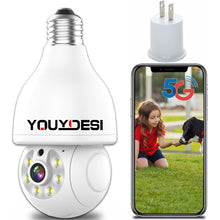2. Clarity: The clarity of a surveillance camera is represented by the number of lines, both horizontally and vertically. The more lines a camera has, the higher its clarity, resulting in sharper images.
3. Signal-to-Noise Ratio (SNR): The signal-to-noise ratio in a surveillance camera represents the ratio of the signal's electrical frequency to the background noise's electrical frequency. It is commonly expressed in decibels (dB). A higher SNR indicates a better surveillance camera with superior image signal quality and increased clarity.
4. White Balance: White balance in surveillance cameras refers to the accuracy of generating white after mixing the three primary colors (red, green, and blue) in the display. Adjusting the white balance of the camera can improve the color quality of the image.
5. Backlight Compensation: When a camera captures images in a backlighting environment, it may result in dark or underexposed images. This is a drawback for 24-hour surveillance cameras. Backlight compensation comes into play in such situations. With backlight compensation, the camera detects areas with lower video levels within the captured image. It then increases the output video signal's amplitude to make the image clearer.
Understanding these terms is crucial for evaluating and selecting the right surveillance cameras for your indoor/outdoor home security, including wireless and light bulb cameras.












